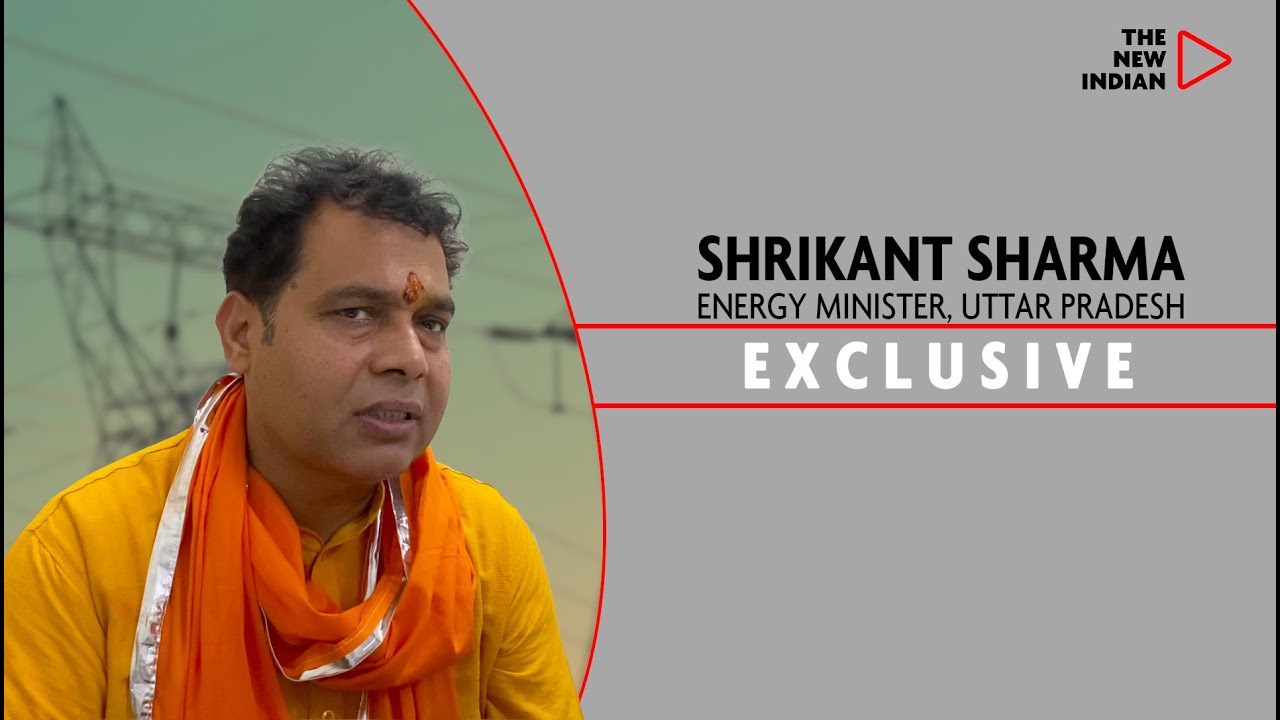From selective distribution of power supply in the state to indiscriminate dispensation, Uttar Pradesh has come a long way in the electrification of the state under the aegis of its Energy Minister, Shrikant Sharma. The BJP minister, who won from the Mathura constituency, has been working tirelessly to ensure that all the residents of the state enjoy this basic necessity.
Speaking to Pramod Kumar Singh, Associate Editor, The New Indian, Sharma shared that in keeping with the promise made by the UP CM Yogi Adityanath, the department has ensured power supply to all 75 districts; uninterrupted 24 hours of power supply to districts headquarters; 20 hours supply to Tehsil headquarters and 18 hours supply to the village in the state. Also Read: Arrested Pak Spy Entered India Via Bangladesh 10 Years Ago; Was Planning Terror Attacks Between Dussehra And Diwali
हमारी सरकार ने बिना भेदभाव के 75 ज़िलों में समान रूप से बिजली दी है। ज़िला मुख्यालय पर हम लोग 24 घंटे बिजली देते हैं, तहसील मुख्यालय पर हम लोग 20 घंटे देते हैं, बुंदेलखंड में 22 घंटे देते हैं और गांव को हम लोग 18 घंटे बिजली देते हैं ।
And this is no mean feat. The minister claimed that during the earlier regimes, distribution of power supply was confined to a few electoral constituencies, mostly led by those with political clout. According to him, the current developments are in accordance with the rural electrification scheme of the central government, envisioned by Prime Minister Narendra Modi.
हमारी सरकार जब आई थी तो यहाँ ग्रिड की जो क्षमता थी लगभग 16,000 के आसपास थी। आज हम लोग 25,000 मेगावाट से अधिक की डिमांड मीट कर रहे हैं। और 2022 के अंत तक हमारी जो क्षमता है वो 28,000 मेगावाट हो जाएगी।
He explained that the power production costs up to ₹7.55 per unit but it is provided at ₹1.25 per unit to the farmers and ₹3 per unit up to the first 100 units to those belonging to economically weaker sections. The production cost is compensated by the government. The state has announced a subsidy that amounts to ₹11, 000 crore. “We have increased the capacity of the grid, improved infrastructure and extended power transmission lines, spending over ₹11,000 crore on transmission infrastructure. The way we see it, electricity is a basic necessity rather than a mere political tool,” he added. Also Read: Mundra Port Drug Recovery Case: Here’s What We Know Of NIA’s Searches At 5 NCR Locations
कंज़्यूमर के घर तक पहुँचने में जो बिजली की कॉस्ट है, ₹7.55 आती है। हमने मैनिफेस्टो में अपने जो घोषणा की थी कि हम जो ग़रीब परिवार हैं, उन लोगों को पहले 100 यूनिट मात्र ₹3 में देंगे, तो हम ₹3 में पहले 100 यूनिट दे रहे हैं। बाक़ी सबसीडी सरकार दे रही है। ऐसे ही किसानों को ₹7.55 की बिजली ₹1.25 प्रति यूनिट के हिसाब से देती है।
According to the minister, the state had ensured uninterrupted power supply to hospitals and homes during Covid-19 peak in the state. “Our government separated agriculture feeders for farmers to deal with the issue of low voltage in rural areas and terminated dark zones,” he added. At present, the electricity board is dealing with a loss of ₹90,000 crore because of the last bill deposition up to 75 per cent in rural areas and 25 per cent in urban areas.
यह विभाग लगभग 90,000 करोड़ के घाटे में है। क्योंकि उसका एक बड़ा रीज़न यह है कि हमारे ग्रामीण क्षेत्रों में 75% लोग अन्य-अन्य कारणों से बिल का भुगतान नहीं कर पाते हैं। ऐसे ही शहरी क्षेत्रों में लगभग 25% लोग हैं जो समय पर अपने बिल का भुगतान नहीं कर पाते हैं।










